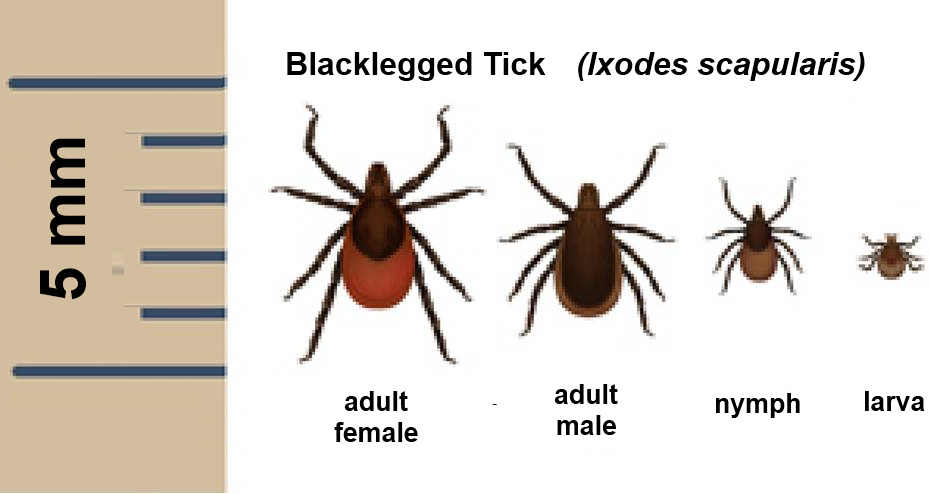Nebraskans can now add the blacklegged tick to the list of ticks found in the state. Established populations of this tick were recently identified for the first time in Nebraska in Douglas, Sarpy and Saunders counties. Blacklegged ticks, also called deer ticks, can transmit Lyme disease and other diseases.
“Ticks can be efficient carriers of disease and tick-related illnesses can be serious,” said Dr. Tom Safranek, state epidemiologist for the Nebraska Department of Health and Human Services (DHHS). “We see very few cases of Lyme disease and other human diseases associated with this tick in Nebraska. Most have been from exposure in areas of the country where the tick and the diseases it transmits have been long-established. Detection of established populations heightens our concern.”
DHHS plans to keep a close eye on the blacklegged tick and efforts are underway to conduct further surveillance. People concerned about possible infection from a tick bite should contact a healthcare provider. Suspected infections should be reported to a local health department or DHHS.
Ticks are not insects. They’re actually close relatives of scorpions, mites and spiders. There are now four types of medically-important ticks found in Nebraska:
- American dog tick
- Rocky Mountain wood tick
- Lone Star tick
- Blacklegged tick/Deer tick
There are simple steps people can take that offer protection against any type of tick.
Preventive steps include:
- Use a repellent with at least 20 percent DEET, picaridin or IR3535 or permethrin-treated clothing.
- Dress in long-sleeved shirts, pants and socks when you’re outside.
- Do frequent tick checks after being outdoors and remove attached ticks promptly with fine-tipped tweezers.
- Shower as soon as possible after being outdoors.
Ticks are generally found near the ground, in brushy or wooded areas. They can’t jump or fly. Instead, they climb tall grasses or shrubs and wait for you to brush against them. When this happens, they hang on to you with tiny claws and then take a bite.
What to do if you find an attached tick:
- Remove the attached tick as soon as you notice it by grasping with fine-tipped tweezers, as close to the skin as possible, and pulling it straight out. Early removal can minimize and often eliminate the chance of infection.
- Watch for signs of illness such as rash or fever in the days and weeks following the bite, and see a health care provider if these develop.
Additional information about tick-related diseases is available here – www.cdc.gov/ticks.
Some pets are also susceptible to tick-related disease. Learn more about tick bite prevention for your pets – www.cdc.gov/ticks/avoid/on_pets.html.
Image from Wikimedia Commons.

